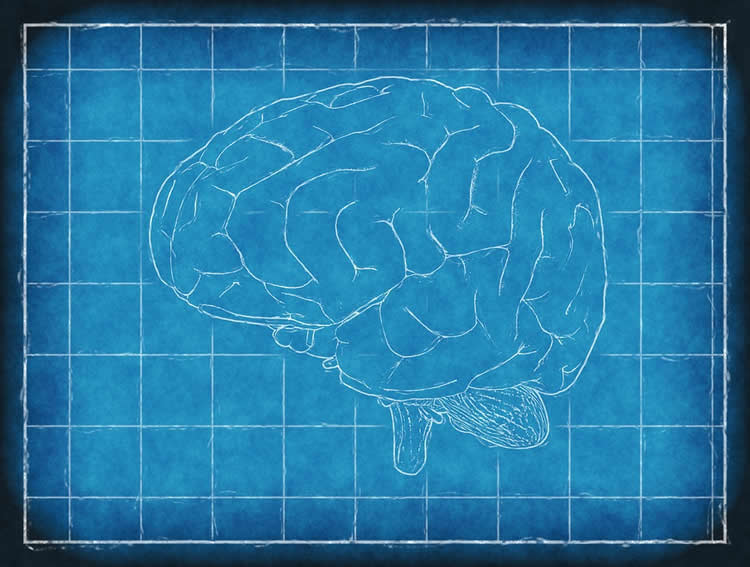Summary: When viewing OCD related images, those with the disorder had increased distress and higher levels of activity in emotion related brain regions than their siblings who did not suffer from OCD, researchers report.
Source: Elsevier.
A new study in Biological Psychiatry: Cognitive Neuroscience and Neuroimaging reports that people with obsessive-compulsive disorder (OCD) feel more distress when viewing images to provoke OCD-related emotions than their unaffected siblings. Although the unaffected siblings showed lower levels of distress, they had higher levels of brain activity in regions important for attention. The findings suggest that the family members may draw on additional brain resources to compensate for potential abnormalities in emotion regulation.
The study reveals an important difference in how the brain processes and regulates emotion between patients with OCD and their unaffected siblings. “This indicates that the brain function of people with OCD is a product of currently having the disorder, and unrelated to genetic or familial risk,” said first author Anders Thorsen, MSc, of Haukeland University Hospital, Norway. The distinction is crucial for efforts to identify people at risk for OCD–a disorder that has strong genetic influences. Although difficulty with emotion regulation is thought to contribute to OCD, the findings indicate that brain activity patterns associated with abnormal emotion regulation cannot be used to identify people who are at genetic risk of OCD.
In the study, Mr. Thorsen and colleagues compared 43 patients with OCD, 19 unaffected siblings, and 38 unrelated healthy controls. During measurements of brain activity, participants viewed pictures to evoke fear or OCD-related symptoms, such as compulsive washing or checking the surrounding environment for potential harm, and reported their levels of distress. The participants were instructed to either simply view the picture or try to tune down their negative emotions in response to the picture.
People with OCD and their unaffected siblings had similar brain responses and feelings of distress in response to fearful images as the healthy controls. However, when viewing OCD-related images, patients with OCD had increased distress and higher levels of activity in emotion-related brain regions than healthy controls. Brain activity in siblings fell between the levels in patients and controls, not distinguishable from either. “At the same time, siblings are also not like healthy controls,” said Mr. Thorsen, referring to the higher levels of brain activity in attention-related brain regions when trying to regulate the negative emotion response.

“Interestingly, relatives show brain responses in areas that seem to be working harder to help them ‘normalize’ their responses to these types of OCD-related stimuli,” said Cameron Carter, MD, Editor of Biological Psychiatry: Cognitive Neuroscience and Neuroimaging. The authors suggest that the harder working brain regions in siblings may represent compensation to help redirect their focus of attention to protect themselves from developing OCD.
“Future studies should try to further investigate this idea by following families with OCD through development,” said Mr. Thorsen.
Source: Rhiannon Bugno – ElsevierPublisher: Organized by NeuroscienceNews.com.
Image Source: NeuroscienceNews.com image is credited to the researchers.
Original Research: Abstract for “Emotion Regulation in Obsessive-Compulsive Disorder, Unaffected Siblings, and Unrelated Healthy Control Participants” by Anders L. Thorsen, Stella J .de Wit, Froukje E.,de Vriesd, Danielle C. Cathh, Dick J.Veltman, Ysbrand D.van der Werf, David Mataix-Cols, Bjarne Hansen, Gerd Kvale, and Odile A. van den Heuvel in Biological Psychiatry: Cognitive Neuroscience and Neuroimaging. Published March 24 2018.
doi:10.1016/j.bpsc.2018.03.007
[cbtabs][cbtab title=”MLA”]Elsevier”People with OCD Process Emotions Differently Than Their Unaffected Siblings.” NeuroscienceNews. NeuroscienceNews, 9 May 2018.
<https://neurosciencenews.com/ocd-emotion-processing-9011/>.[/cbtab][cbtab title=”APA”]Elsevier(2018, May 9). People with OCD Process Emotions Differently Than Their Unaffected Siblings. NeuroscienceNews. Retrieved May 9, 2018 from https://neurosciencenews.com/ocd-emotion-processing-9011/[/cbtab][cbtab title=”Chicago”]Elsevier”People with OCD Process Emotions Differently Than Their Unaffected Siblings.” https://neurosciencenews.com/ocd-emotion-processing-9011/ (accessed May 9, 2018).[/cbtab][/cbtabs]
Abstract
Emotion Regulation in Obsessive-Compulsive Disorder, Unaffected Siblings, and Unrelated Healthy Control Participants
Background
Functional neuroimaging endophenotypes of obsessive-compulsive disorder (OCD) have been suggested during executive tasks. The purpose of this study was to investigate whether behavioral and neural responses during emotion processing and regulation also represent an endophenotype of OCD.
Methods
Forty-three unmedicated adult OCD patients, 19 of their unaffected siblings, and 38 healthy control participants underwent 3T functional magnetic resonance imaging during an emotion regulation task including neutral, fear-inducing, and OCD-related visual stimuli. Stimuli were processed during natural appraisal and during cognitive reappraisal, and distress ratings were collected after each picture. We performed between-group comparisons on task behavior and brain activation in regions of interest during emotion provocation and regulation.
Results
Siblings reported similar distress as healthy control participants during provocation, and significantly less than patients. There was no significant three-group difference in activation during fear provocation or regulation. Three-group comparisons showed that patients had higher amygdala and dorsomedial prefrontal cortex activation during OCD-related emotion provocation and regulation, respectively, while siblings were intermediate between patients and control participants but not significantly different from either. Siblings showed higher left temporo-occipital activation (compared with both healthy control participants and patients) and higher frontolimbic connectivity (compared with patients) during OCD-related regulation.
Conclusions
Unaffected siblings do not show the same distress and amygdala activation during emotional provocation as OCD patients. Siblings show distinct activation in a temporo-occipital region, possibly related to compensatory cognitive control. This suggests that emotion regulation is not a strong endophenotype for OCD. When replicated, this contributes to our understanding of familial risk and resilience for OCD.






